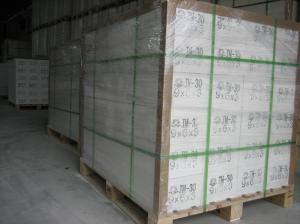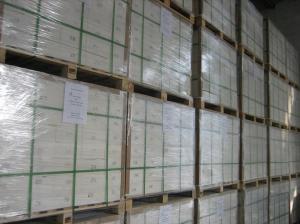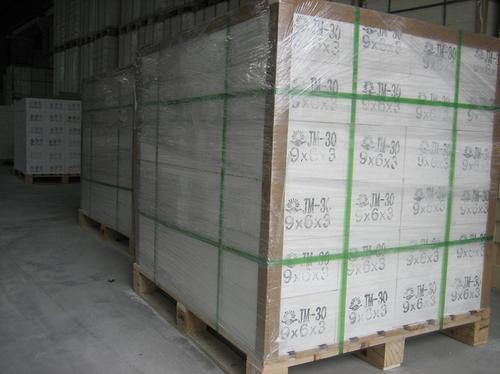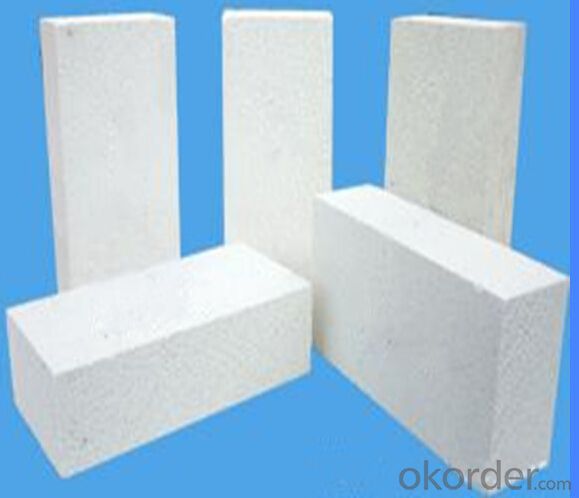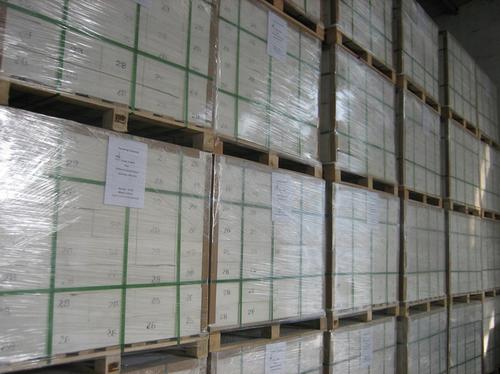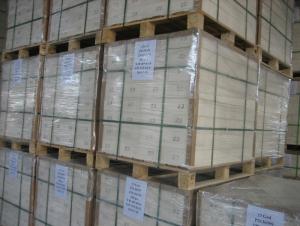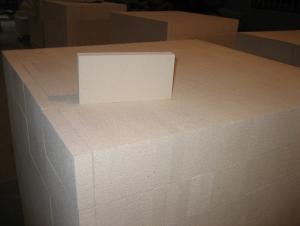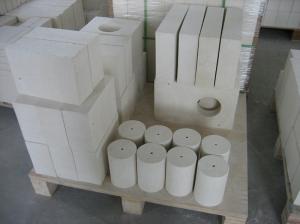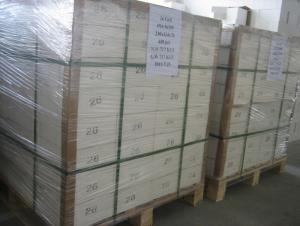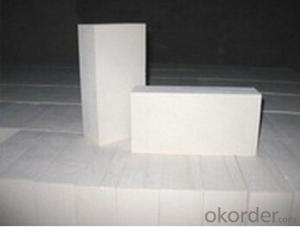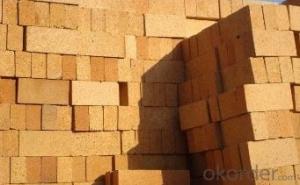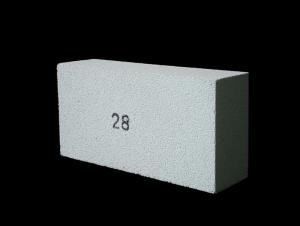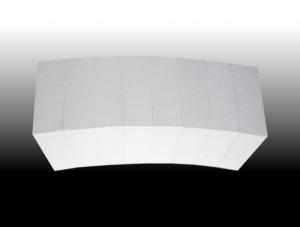Insulating Fire Brick - Refractory Mullite Insulating Refractory Brick JM 39
- Loading Port:
- Shanghai
- Payment Terms:
- TT OR LC
- Min Order Qty:
- 20 m.t.
- Supply Capability:
- 20 m.t./month
OKorder Service Pledge
OKorder Financial Service
You Might Also Like
Okorder series heat insulation brick
Okorder series thermal insulation brick is an effective, energy saving, low carbon, environmental protection advanced, according to the ASTM standard manufacturing products. Okorder series products have all kinds of materials in the field of metallurgy, industrial furnaces, aluminum, the best Li Ning petrochemical and insulation, electric power and glass ceramics. They can be used as part of an insulation or not to melt. Products have been widely used in the following furnace, achieved satisfactory results.
Application of heat preservation brick
Metallurgical Industry: blast furnace, hot blast furnace, heating furnace, etc..
Petrochemical Industry: ethylene cracking furnace, hydrogen furnace, the main furnace, heating furnace, etc..
Ceramic industry: roller kiln, kiln, etc..
Glass industry: glass furnace regenerator, etc.
Carbon industry: carbon furnace, etc..
Aluminum electrolysis industry: aluminum reduction cell, etc.
Other industries: tunnel kiln, shuttle kiln, etc..
Advantages of heat insulation brick
Low thermal conductivity: many air holes will bring good thermal insulation effect, energy saving.
High crushing strength: high crushing strength, volume stability.
Low heat storage: small heat storage, absorb more heat, energy-saving effect is obvious.
Chundu: High-speed Rail, low content of alkali metal impurities.
Accuracy: the size of the brick machining precision, cutting and grinding the special shape, speed up the brick.
Insulating brick
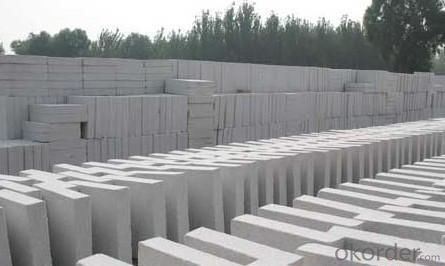
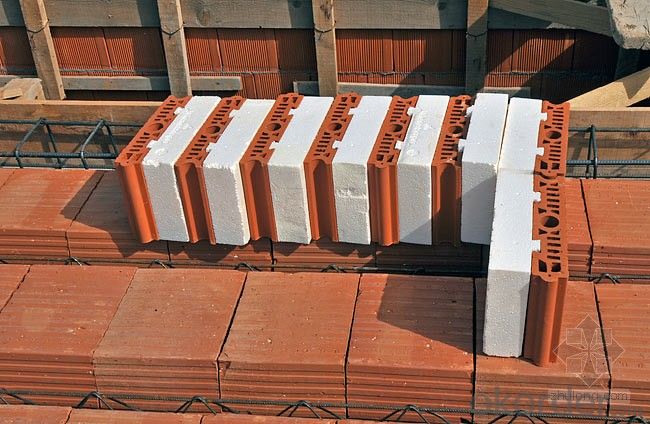
- Q: Can insulating fire bricks be used as a lining material for boilers?
- Yes, insulating fire bricks can be used as a lining material for boilers. Insulating fire bricks are made from lightweight refractory materials that have high insulating properties. These bricks are designed to withstand high temperatures, making them suitable for use in boilers where temperatures can reach up to several hundred degrees Celsius. The insulating properties of these bricks help to reduce heat loss, improving the energy efficiency of the boiler. Additionally, insulating fire bricks are resistant to thermal shock, which is crucial for withstanding the rapid temperature changes that occur in boilers. Overall, insulating fire bricks are a suitable choice for lining boilers due to their excellent insulating properties and ability to withstand high temperatures.
- Q: Are insulating fire bricks easy to cut or shape?
- Yes, insulating fire bricks are relatively easy to cut or shape. They can be cut using basic tools such as a saw or a knife, and they can also be shaped by using a chisel or sandpaper. Their soft and lightweight composition allows for easier manipulation and customization to fit specific requirements.
- Q: Can insulating fire bricks be used in high-temperature insulation for aerospace applications?
- Yes, insulating fire bricks can be used in high-temperature insulation for aerospace applications. Insulating fire bricks are made from lightweight refractory materials that have high insulating properties and can withstand extreme temperatures. These bricks have low thermal conductivity, which allows them to effectively reduce heat transfer and maintain the desired temperature inside aerospace components. Aerospace applications often involve high-temperature environments, such as in rocket engines, exhaust systems, and thermal protection systems. Insulating fire bricks can be used in these applications to provide thermal insulation, protecting sensitive components from excessive heat and preventing heat loss to the surroundings. Additionally, insulating fire bricks are known for their excellent resistance to thermal shock, meaning they can withstand rapid temperature changes without cracking or degrading. This property is crucial in aerospace applications where components are subjected to extreme temperature variations during launch, re-entry, or other operational phases. Moreover, insulating fire bricks have lightweight properties, which can be advantageous in aerospace applications where weight reduction is critical for fuel efficiency and overall performance. By using insulating fire bricks, aerospace engineers can achieve effective thermal insulation while minimizing the added weight to the system. Overall, insulating fire bricks offer a viable solution for high-temperature insulation in aerospace applications. Their high insulating properties, resistance to thermal shock, and lightweight nature make them suitable for protecting critical aerospace components in extreme temperature environments.
- Q: Can insulating fire bricks be used in the construction of heat shields?
- Yes, insulating fire bricks can be used in the construction of heat shields. Insulating fire bricks are specially designed to handle high temperatures and provide excellent thermal insulation. They can effectively absorb and distribute heat, making them ideal for creating heat shields that protect against intense heat and prevent it from reaching sensitive areas or materials.
- Q: How do insulating fire bricks help reduce emissions from heating equipment?
- Insulating fire bricks play a significant role in reducing emissions from heating equipment by improving the overall energy efficiency of the system. These bricks are specifically designed to have low thermal conductivity, which means they are excellent at insulating heat and preventing heat loss. When used in heating equipment such as furnaces or boilers, insulating fire bricks help to retain heat within the system, allowing it to reach and maintain higher temperatures more effectively. This increased efficiency results in reduced fuel consumption, as less energy is required to achieve the desired heating levels. By reducing fuel consumption, insulating fire bricks indirectly contribute to lowering emissions. When less fuel is burned to produce the same amount of heat, there is a corresponding decrease in the release of greenhouse gases and other pollutants into the atmosphere. This is particularly important in the context of fossil fuel-based heating systems, which are major contributors to carbon dioxide emissions and air pollution. Furthermore, the use of insulating fire bricks can also lead to improved combustion efficiency. The higher temperatures achieved and maintained within the heating equipment can enhance the combustion process, ensuring a more complete and cleaner burn. This helps to minimize the production of harmful by-products, such as carbon monoxide and nitrogen oxides, which are not only detrimental to the environment but also pose health risks to humans. In summary, insulating fire bricks aid in reducing emissions from heating equipment by enhancing energy efficiency, reducing fuel consumption, and promoting cleaner combustion. By improving the overall performance of heating systems, these bricks contribute to a more sustainable and environmentally friendly approach to heating.
- Q: Can insulating fire bricks be used in ladles and tundishes?
- Yes, insulating fire bricks can be used in ladles and tundishes. Insulating fire bricks are designed to withstand high temperatures, making them suitable for use in these refractory applications. They provide excellent thermal insulation, reducing heat loss and improving energy efficiency in ladles and tundishes.
- Q: Can insulating fire bricks be used in refractory cement?
- Yes, insulating fire bricks can be used in refractory cement. Insulating fire bricks are specifically designed to withstand high temperatures and provide excellent insulation, while refractory cement is used to bind and seal refractory materials. By using insulating fire bricks in refractory cement, it can enhance the overall insulation properties and improve the performance of the cement in high-temperature applications.
- Q: Are insulating fire bricks resistant to vibrations?
- Insulating fire bricks, although renowned for their exceptional thermal insulation properties, usually lack resistance against vibrations. Typically, these bricks are crafted from lightweight materials like ceramic fibers, vermiculite, or perlite, which do not possess notable capabilities to dampen or absorb vibrations. Hence, if a particular application necessitates vibration resistance, it would be prudent to explore alternative materials or designs that are better suited for such circumstances.
- Q: Are insulating fire bricks resistant to cracking?
- Insulating fire bricks possess a deliberate design aimed at achieving exceptional crack resistance. Crafted from lightweight ceramic substances with low thermal conductivity and remarkable thermal shock resistance, these bricks can endure swift temperature fluctuations without fracturing. Moreover, the bricks undergo a firing process that fortifies their structure and reduces the likelihood of cracking. Nevertheless, it is crucial to acknowledge that insulating fire bricks may still incur cracks under extreme thermal shock or physical impact. Hence, it is imperative to handle and install them properly to safeguard their durability and efficacy.
- Q: What is the typical lifespan of insulating fire bricks in high-temperature applications?
- The lifespan of insulating fire bricks in high-temperature applications can differ depending on various factors. These factors include the quality and composition of the bricks, the temperatures they are exposed to, the rate of thermal cycling, and any external factors that may affect their durability. Typically, insulating fire bricks are designed to endure high temperatures and have a longer lifespan compared to regular bricks or other materials. They are usually made from lightweight refractory materials like alumina and silica, which possess excellent thermal insulating properties. In high-temperature applications, insulating fire bricks can last for several years, even decades, when they are properly installed and maintained. However, it is important to note that continuous exposure to extremely high temperatures, rapid temperature changes, or harsh chemical environments can expedite the deterioration of these bricks. Regular inspection and maintenance of insulating fire bricks are essential to ensure their durability. Over time, these bricks may experience thermal shock, erosion, or cracking due to the extreme thermal conditions. By identifying signs of degradation or damage early on, appropriate measures can be taken to repair or replace the affected bricks, thus extending the overall lifespan of the insulation system. Ultimately, the specific lifespan of insulating fire bricks in high-temperature applications can vary significantly and is influenced by different factors. Therefore, it is advisable to seek guidance from manufacturers or industry experts who can provide more accurate estimations based on the specific conditions of your application.
Send your message to us
Insulating Fire Brick - Refractory Mullite Insulating Refractory Brick JM 39
- Loading Port:
- Shanghai
- Payment Terms:
- TT OR LC
- Min Order Qty:
- 20 m.t.
- Supply Capability:
- 20 m.t./month
OKorder Service Pledge
OKorder Financial Service
Similar products
Hot products
Hot Searches
Related keywords
